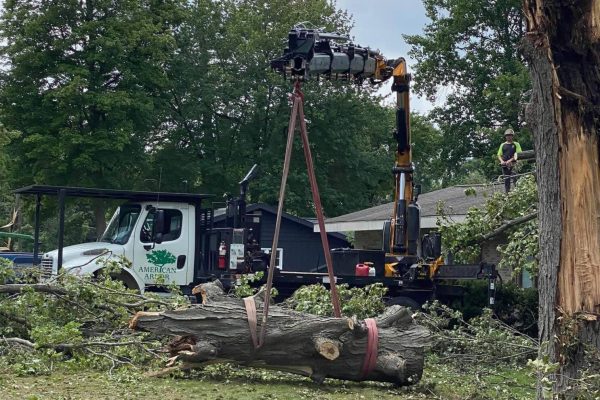How to Tell You Need Tree Removal After the Portage Tornado
With this month’s extensive tornado and storm damage, there’s never been a more important time to work with an arborist. Even now, trees around homes and businesses are blocking driveways, crowding sidewalks, and strewn throughout lawns and gardens. What’s more, some trees are structurally unsound, and could still fall as more storms come.
In this month’s blog post, we’re discussing 4 signs that you need to get a tree removed ASAP following the Portage tornado.
1. Your Tree Leans
One of the most obvious (but surprisingly overlooked) signs that your tree may be a threat to you or your property is if it leans.
Though it may seem obvious that a leaning tree is at risk of falling or breaking, there are legitimate reasons why someone might not be as concerned as they should be. Let’s break down some examples.
If the tree has been leaning for a long time—say, for example, 3 years—and has stayed at the same angle, it may not be a pressing issue. Some trees have a natural lean to them, possibly due to factors such as:
- Growth toward sunlight
- Slanted ground
- Natural genetic differences
While none of these factors guarantee your tree is safe, they are factors we consider that usually make us less nervous. However, there are some signs in leaning trees that usually make us much more nervous. Some of these signs are:
- The tree leans more and more over time
- Proximity to buildings, community gathering spots, or power lines
- Weak, rotting, or uprooted roots
- Disturbed, eroded, or unstable soil
Regardless of whether or not your tree has “neutral” signs of a tree lean or “bad” signs of a tree lean, there’s no way to know without an examination. Click here to contact us for tree removal if you notice a tree leaning on or near your property.
2. Tree Limbs Are Cracked, Broken, or Hanging
This is another obvious one, and it shouldn’t go ignored. If your tree’s limbs or trunk are heavily damaged, then you may need tree removal immediately. Even if the damaged tree limbs are small, they may be signs of an underlying problem. When you bring an arborist out to check on trees with even small limb damage, we’ll almost always want to take a closer look. This is because the factors that made that small limb break could increase over time and place other tree limbs at risk.
3. Root Damage
Root damage is more difficult to assess as a layperson since most of a tree’s roots are underground. On top of that, root damage’s above-ground symptoms can take a while to become observable. If you notice shrinking leaf sizes, dying branches, and reduced growth, these may be signs of root damage, and you should call us in for an assessment.
In the weeks after a tornado like the one that tore through Southwestern Michigan, your trees could still be at risk. Don’t gamble on you and your tree’s health, click here to contact trusted Portage arborists today.


